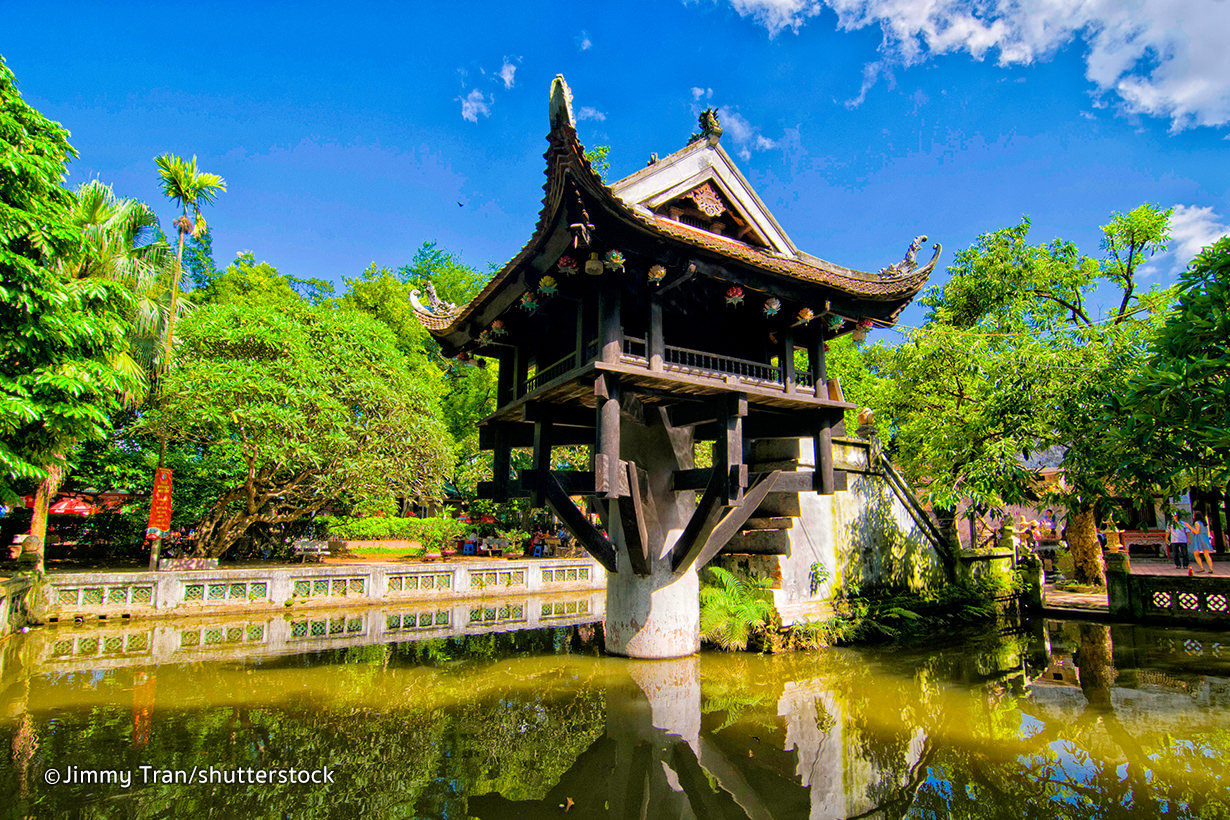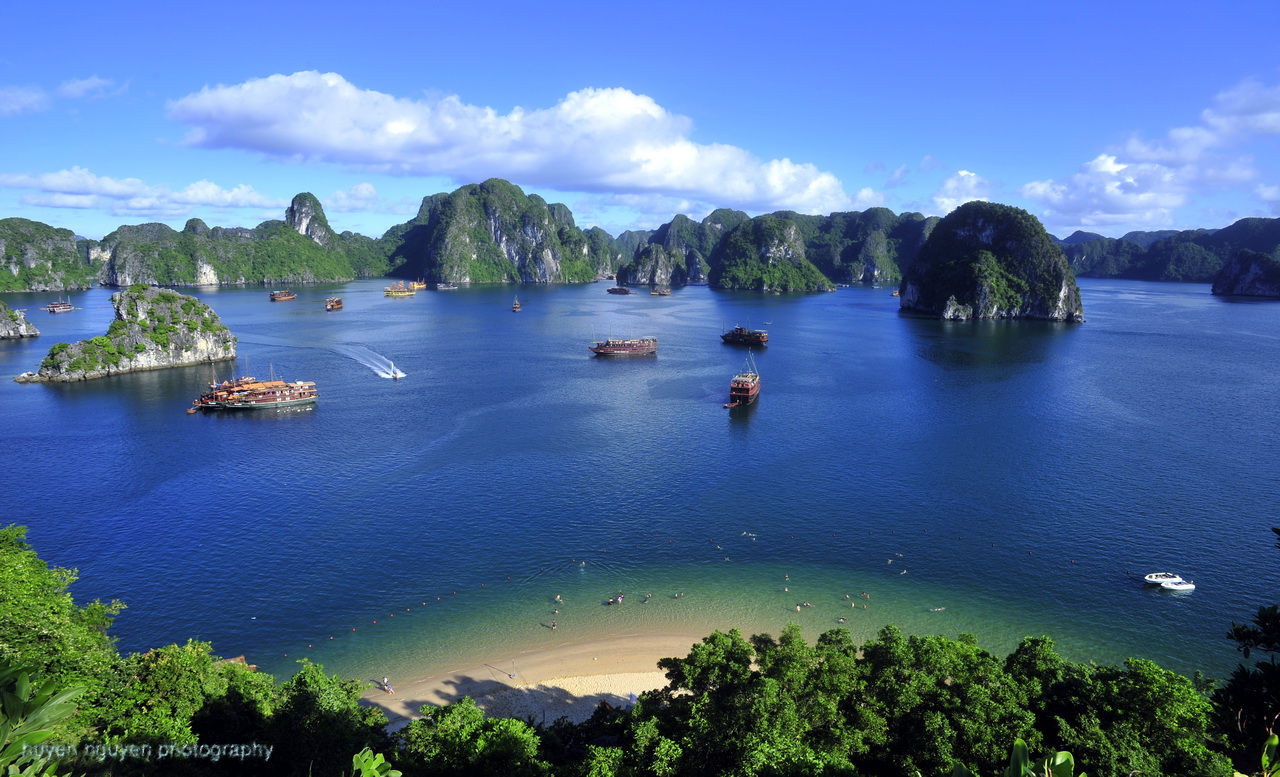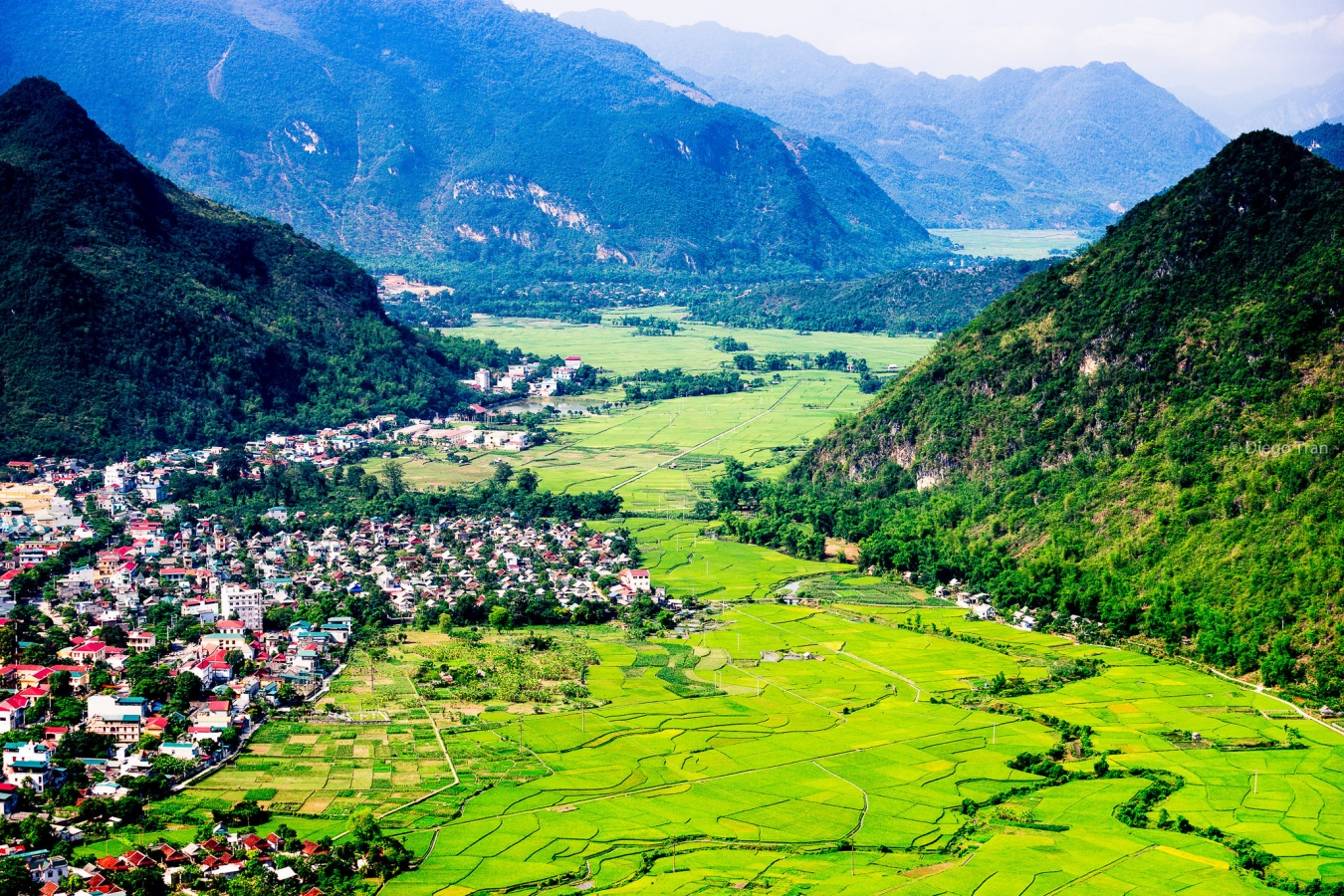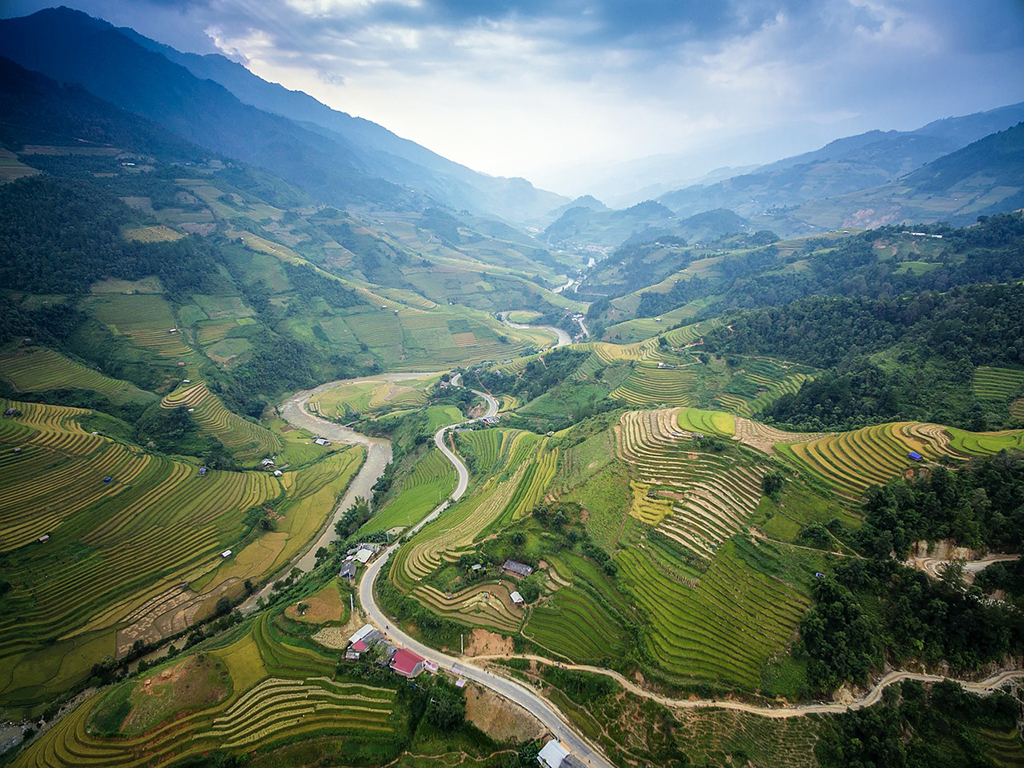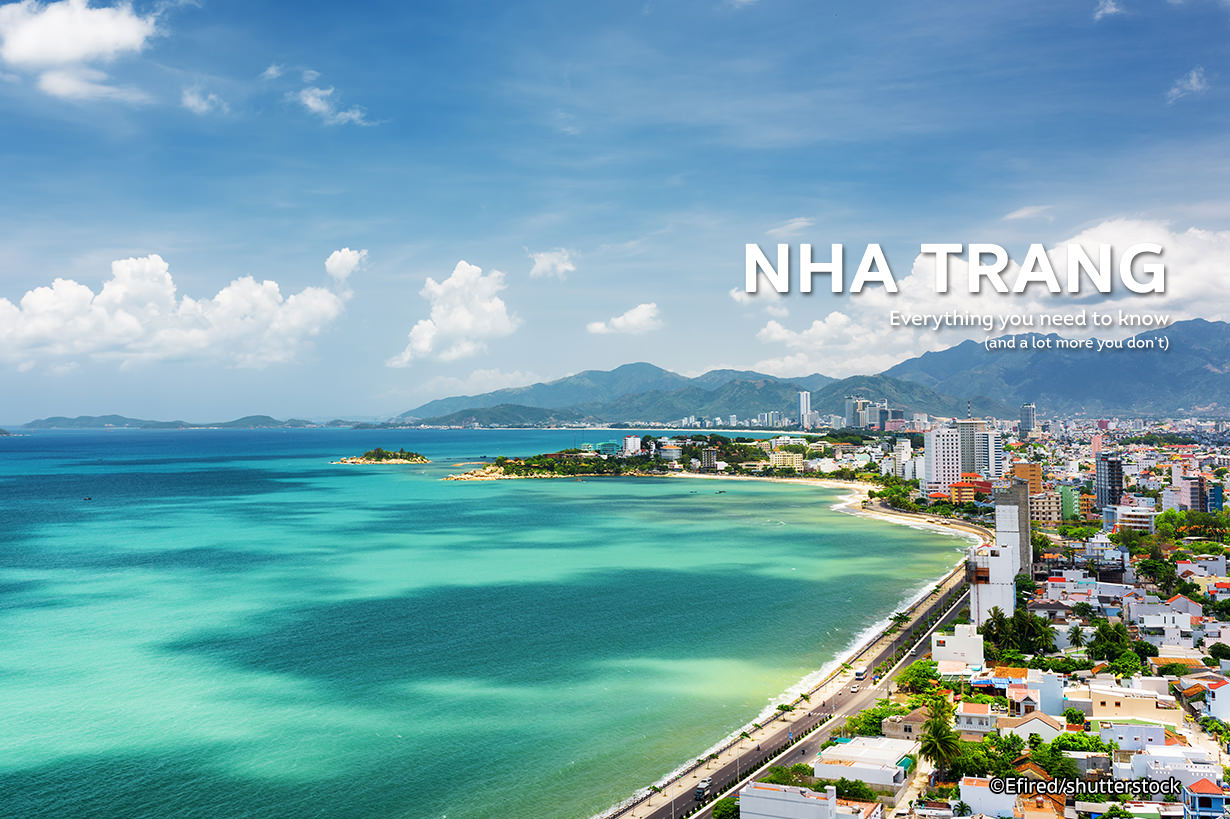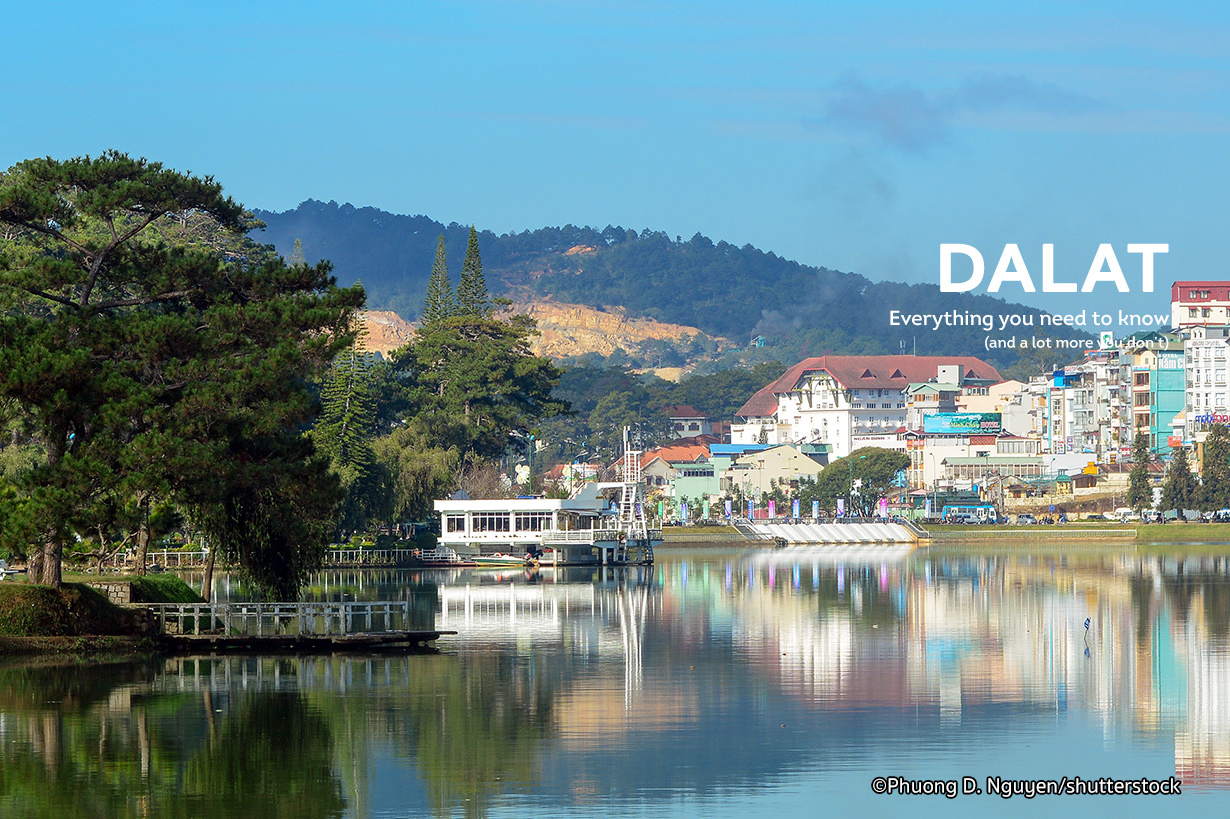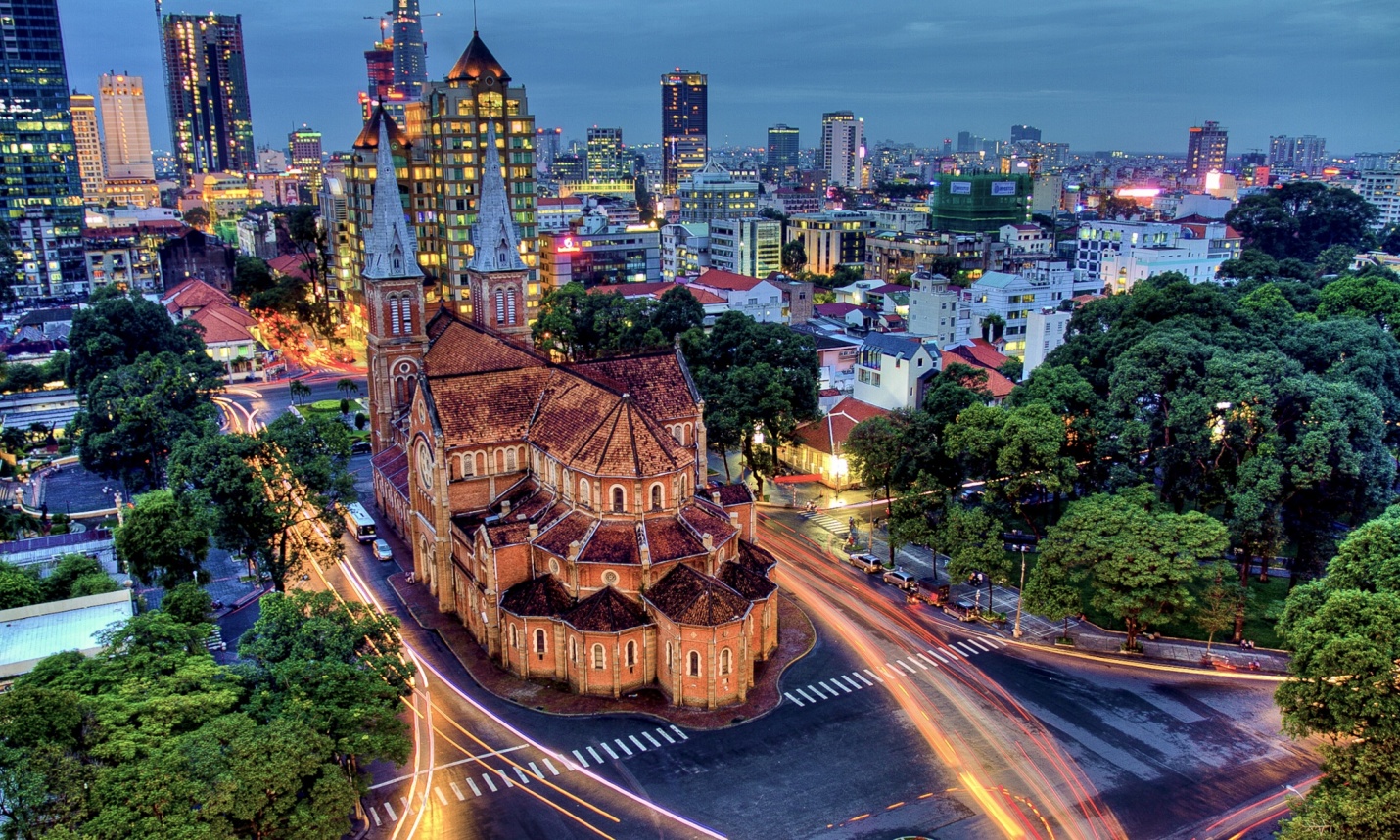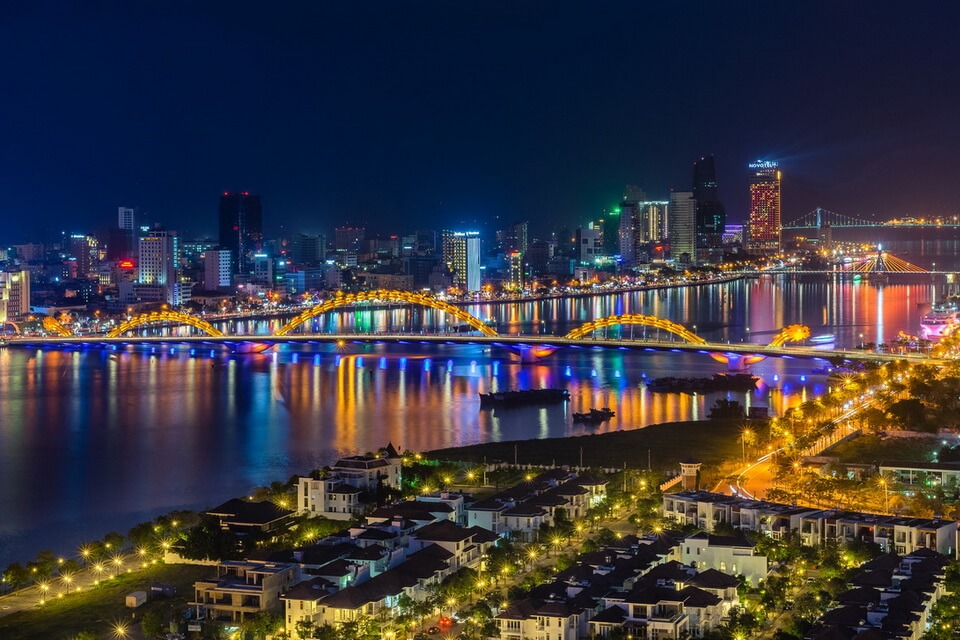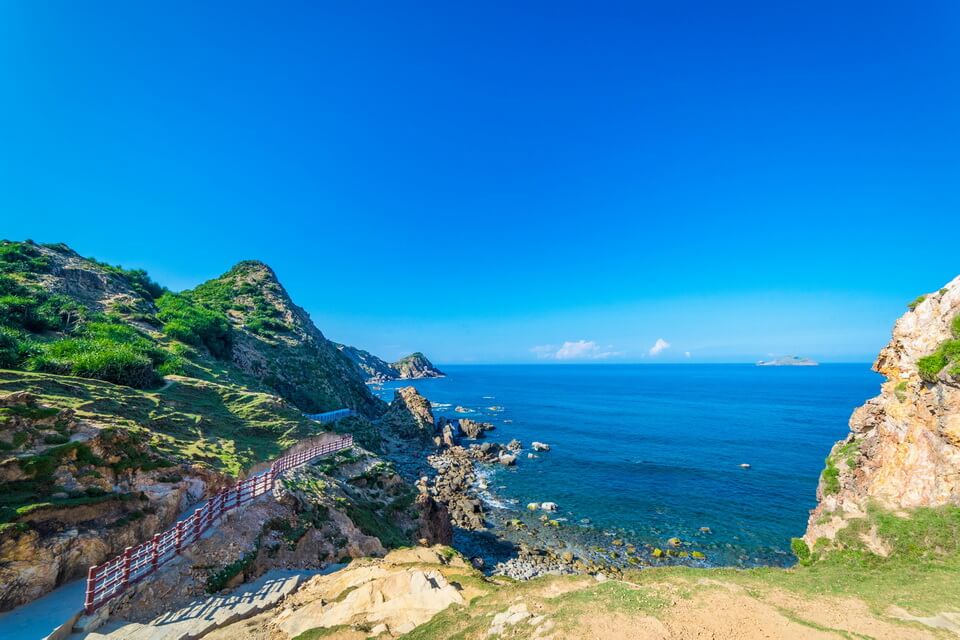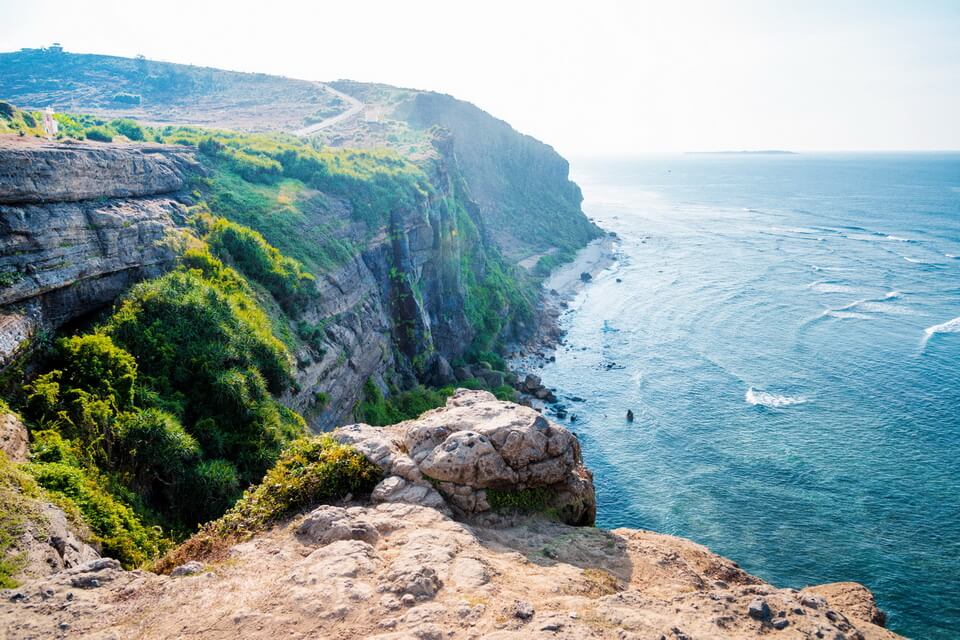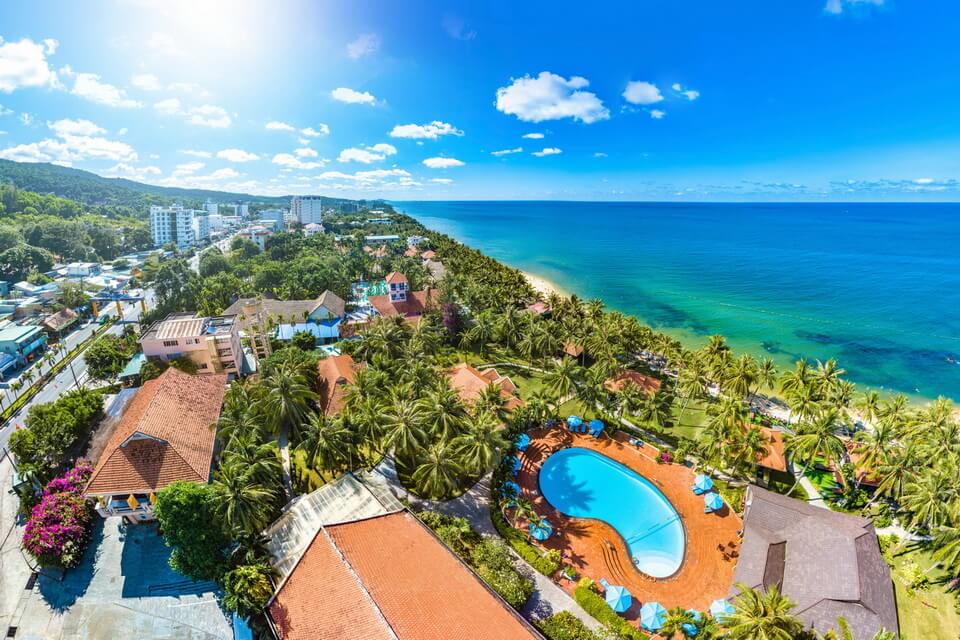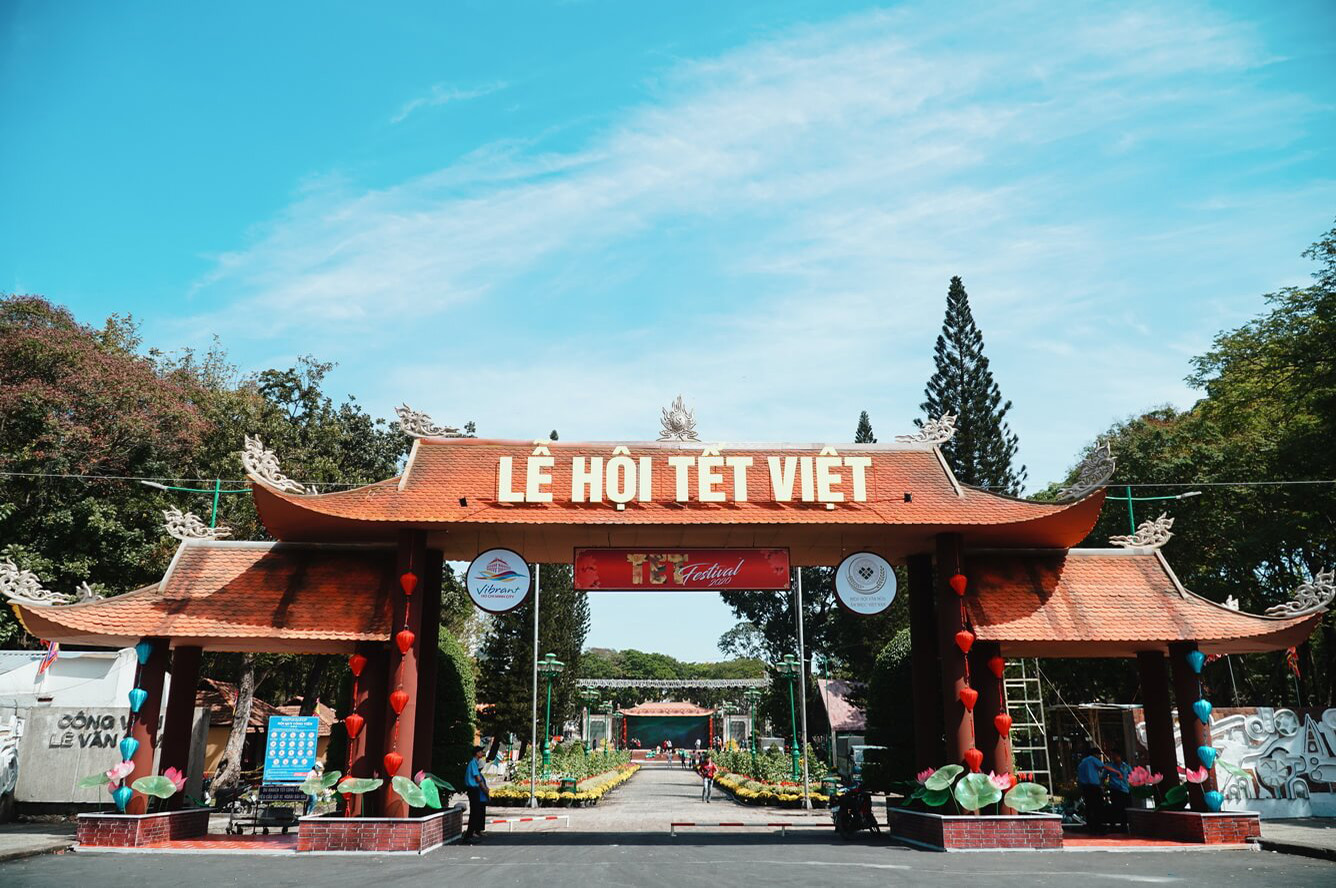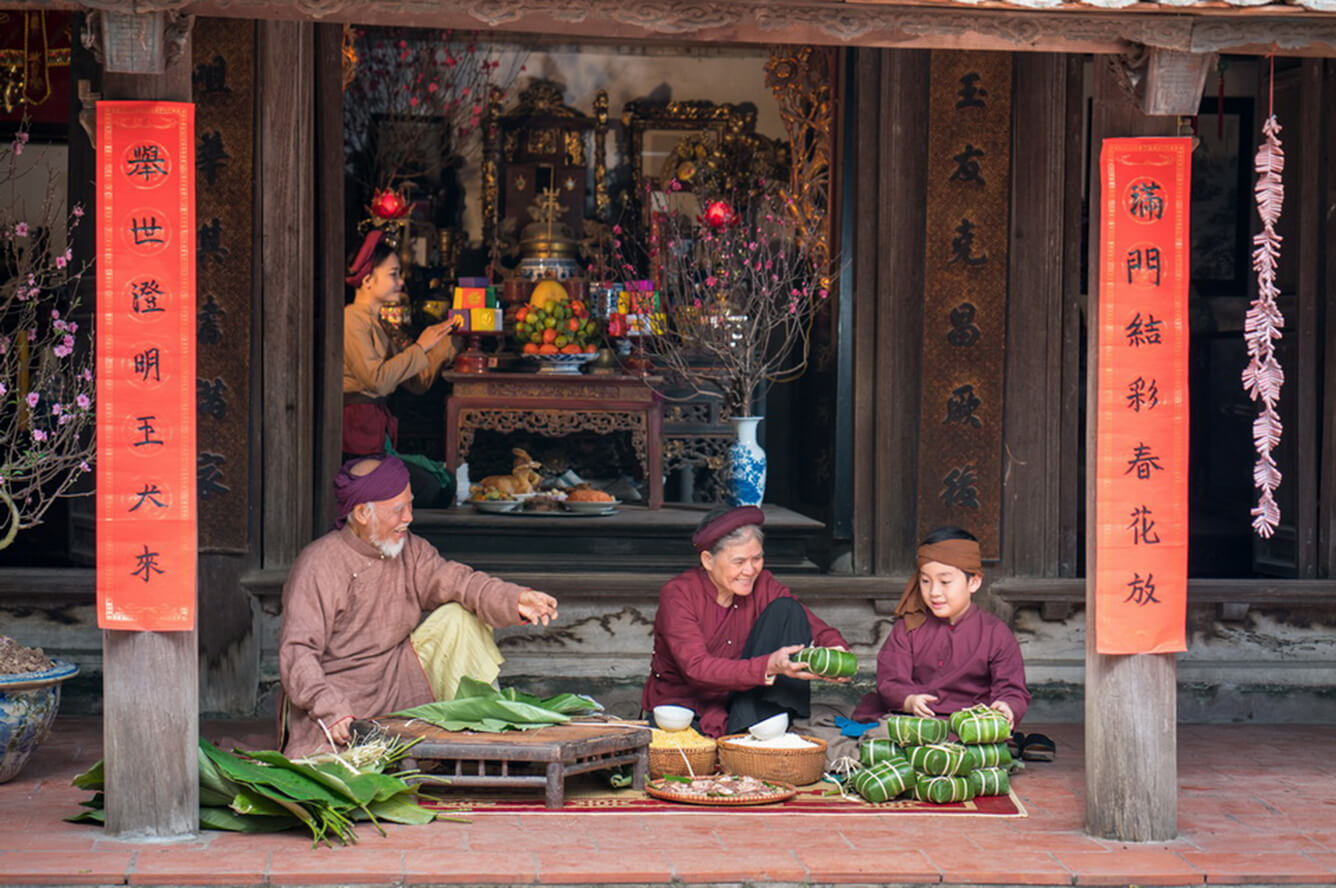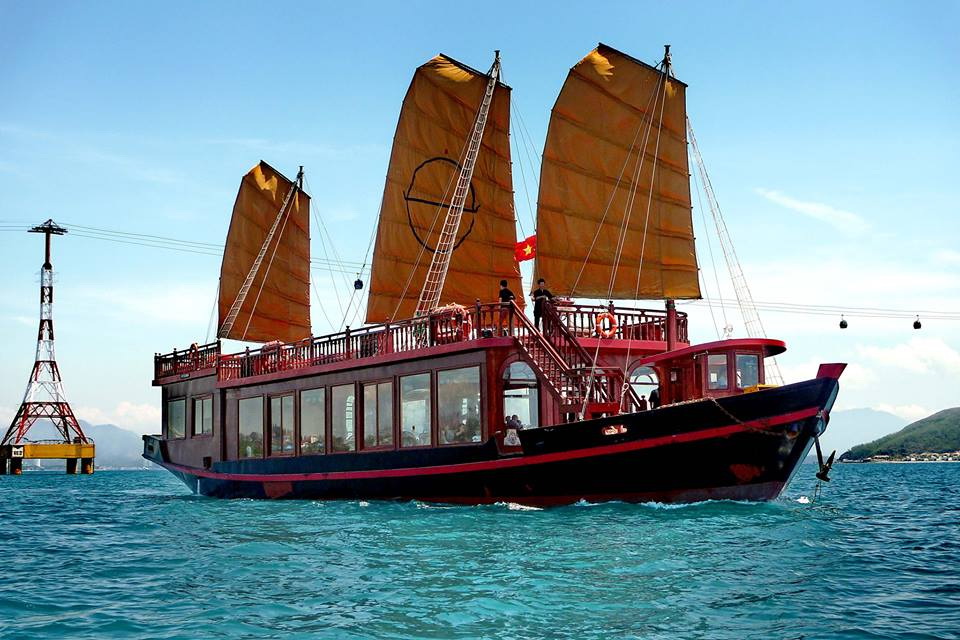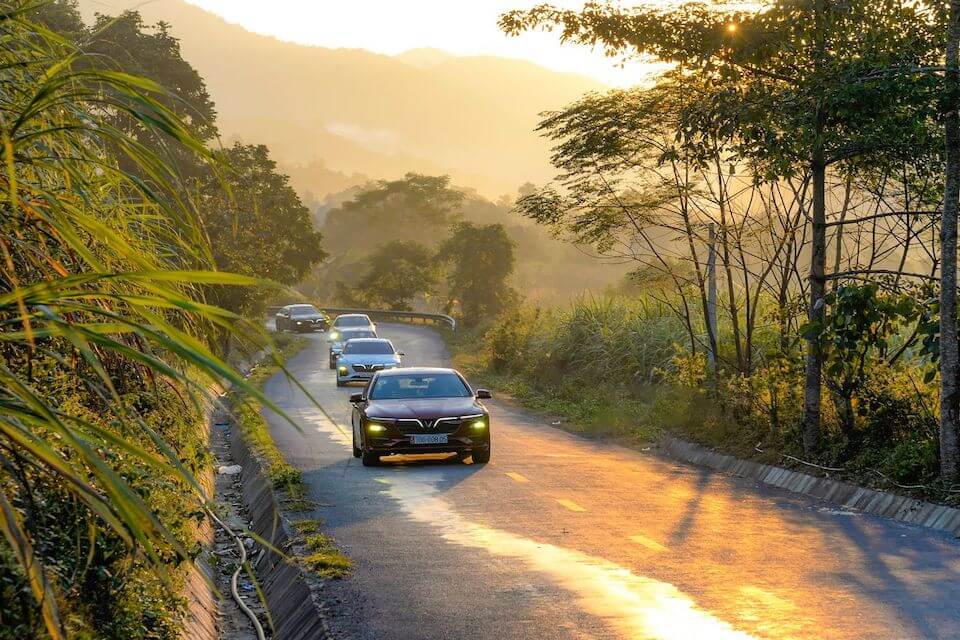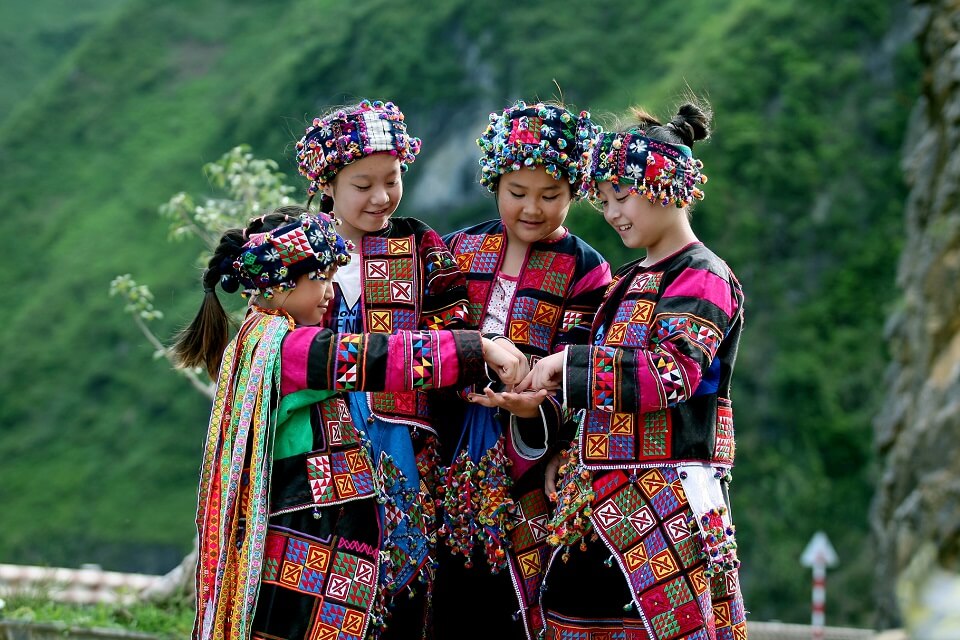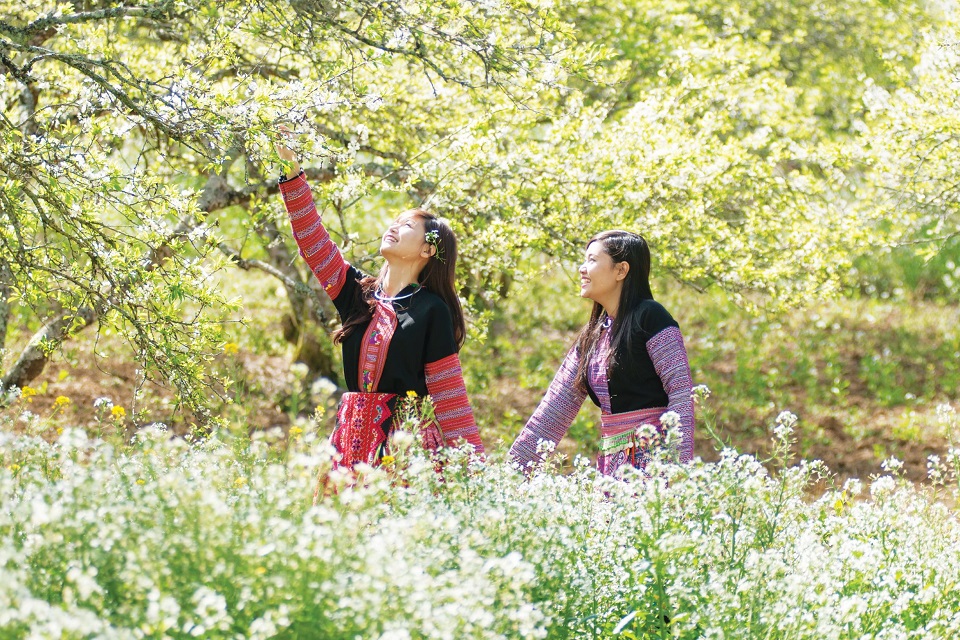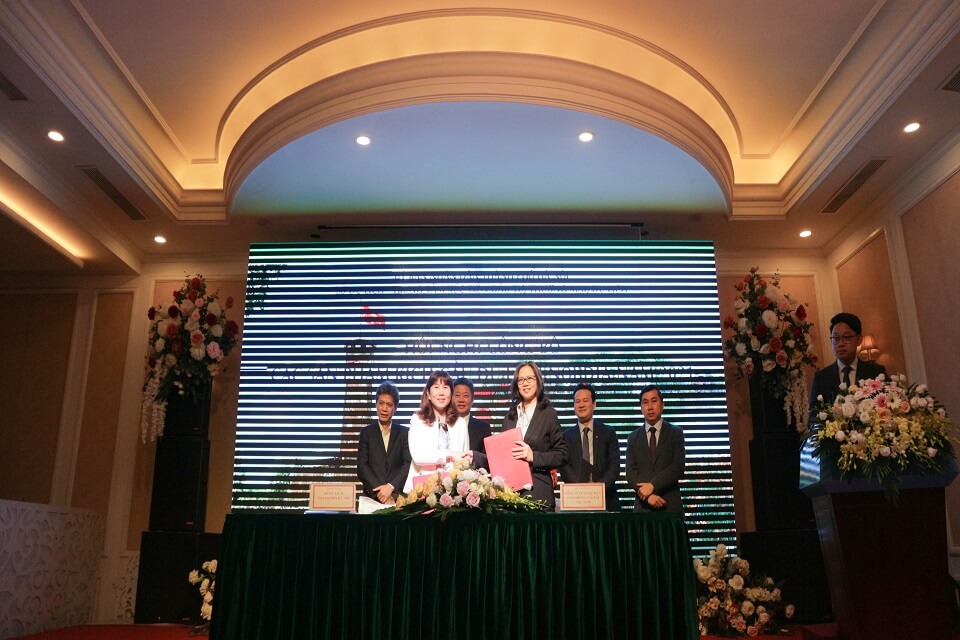Vietnam Highlight Destinations
Vietnam is an utter assault on the senses; at once dizzying, frenetic and fascinating. Conical-hatted street vendors sell their wares on the pavements outside gleaming high-rises and exquisite temples are surrounded by streets buzzing with thousands of motorbikes.
Life in urban Vietnam is conducted on the streets. In bia hois (pavement pubs) men sup ice-cold beer and odours from makeshift food stalls fill the nostrils: see steaming pho, a noodle soup with various unidentifiable chunks of meat, or grilled chicken feet. Along nearly all the moped-clogged streets produce is sold. Tubs wriggle with live sturgeon, crabs and frogs (still a delicacy from French colonial days), baskets are top heavy with colourful and bizarre fruit, and every possible piece of a pig is on sale.
Rural Vietnam is entirely different. Just a short distance from the cities, water buffalo wallow in green rice paddies and elegant women wearing traditional conical headwear cycle along dusty paths.
HANOI
Teeming with culture, history, great restaurants and nightlife, Hanoi offers a fantastic introduction to Vietnam. High-rise buildings are rare in this city which is striving to retain its character. Instead, grand colonial buildings, tranquil lakes and a maze of narrow streets provide the intriguing contrasts.
Hanoi is an elegant city located on the banks of the Red River with tranquil Hoan Kiem Lake at its heart. North of the lake are the bustling streets of the Old Quarter, each street named after the trade that used to take place there.
Following years of rampant inflation, poverty and repression, the government introduced economic reform or doi moi in 1986, allowing people to own their own businesses. Now Hanoi has been totally transformed and visitors are entranced by the city and its residents.
The wide boulevards and large colonial buildings reflect Hanoi’s period as a French Protectorate, whilst other areas are truly Vietnamese with a muddle of narrow streets which bustle from dawn to dusk.
HALONG BAY
Getting here: 4 hour drive from Hanoi through urbanized areas. You’ll transfer to the docking station, since this is a popular destination; expect bustling scenes of boats and large crowds. All this will be left behind once you sail away to a more serene environment.
MAI CHAU
Although most locals no longer wear trad¬itional dress, the Thai women are masterful weavers who ensure that there is plenty of traditional-style clothing to buy in the village centre. You will see women weaving on looms under or inside their houses in the village. Much of the silk looks similar to that seen in Laos. The Thai of Mai Chau are less likely to employ strong-arm sales tactics than their H’mong counterparts in Sapa: polite bargaining is the norm rather than endless haggling
Nestled in a valley amongst verdant hills in the northwestern highlands, Mai Chau’s stunning scenery offers excellent opportunities for trekking and mountain biking while providing a glimpse into the village life of the H’mong and White Thai ethnic hill tribes.
Getting here: Mai Chau is a 4 hour drive from Hanoi. Although the drive can be strenuous due to the mountainous roads, it does offer a good view of the countryside.
SAPA
Set high in Vietnam’s northeast mountains, the hamlet of Sapa offers spectacular views of jagged mountain ridges, terraced rice paddies and green valleys inhabited by people of various ethnic minority groups, most of whom congregate in Sapa’s colorful market. Each group has its own distinctive style of dress. From early childhood, girls learn to grow and weave hemp, to dye cloth with indigo, to sew the family’s clothes, and to decorate items with traditional embroidery motifs. More recently, Sapa has become a tourist mecca.
Getting here: The best way to get to Sapa is to take a 10-hour overnight train from Hanoi. Departing at night you wake up refreshed the next morning in Sapa ready to begin your adventure. Visiting a more remote hill tribe market requires a 3 to 4.5 hour drive on bumpy dirt roads through mountains. The trip is for the adventurous; otherwise enjoy your time in nearby hill tribe villages.
HOI AN
Getting here: Hoi An is a 30 minute drive from Danang International Airport.
NHA TRANG
Nha Trang has a split personality. One takes the form of a smaller Danang – a bustling Vietnamese city humming with commerce but blessed with access to a beautiful beach. The other is a Western resort town encompassing several blocks of hotels, tourist shops, bars and international restaurants.
The city is indisputably beautiful, bordered by mountains, with the beach tracing an impressive long swoop along a bay dotted with islands. Topiary and modern sculpture dot the immaculately manicured foreshore. The only blight on the horizon is the Hollywood-style sign for the Vinpearl complex – an ugly scar dominating nearby Hon Tre Island.
Nha Trang offers plenty to keep tourists occupied – from island-hopping boat trips and scuba diving, to mudbaths and historic sites. But the main attraction for most visitors is lounging around on deckchairs at a beachfront bar and drinking cocktails in comfort.
Getting here: A 45 minute drive from the small domestic airport located in Cam Ranh City. It is a 1 hour flight from Ho Chi Minh City and 1hr 40min from Hanoi.
DA LAT
Year-round, the temperature hovers around 20˚C (68˚F), making this a favorite destination for outdoor enthusiasts. Mountain bikers and hikers will delight in the area’s trails, as well as in views of pine-covered hills, organic farms and lush tea and coffee plantations. Dalat hosts a flower festival every other year which normally takes place in mid-December for one week and features a flower exhibition and a flower parade around Xuan Huong Lake.
Getting here: Dalat has a small domestic airport. It is a 45-minute flight or a six hour drive from Ho Chi Minh City. From Hanoi it takes 1hr, 40 minutes.
PHU QUOC ISLAND
Getting here: A 20 minute flight from Rach Gia (Mekong Delta) or 50 minute flight from HCM City.
CON DAO ISLANDS
The Con Dao is an ideal place for nature lovers and an opportunity to visit unspoiled tropical islands before they become developed.
Getting here: Con Dao has a small modern domestic airport. It is a 50-minute flight from HCM City.
SAIGON
It may be officially known as Ho Chi Minh City but it is often still referred to as Saigon, the name evocative of a city with a past. One of the most poignant symbols of this is the Reunification Palace, where the last days of the Vietnam War were played out.
Today, Ho Chi Minh City is a mesmerising gateway for visitors to Vietnam where traditional and modern influences live side by side. Imagine incense-filled pagodas filled with a constant stream of worshippers; streets buzzing with the engines of countless motorbikes and pavements teeming with street vendors, barbers, dentists and cafés selling steaming bowls of noodle soup by the roadside. Amid this vibrant Asian backdrop are gleaming shopping malls, skyscrapers, coffee shops and bars that would not look out of place in the west. Ho Chi Minh City is the face of the new Vietnam.
Source Indochinadiscoverytravel

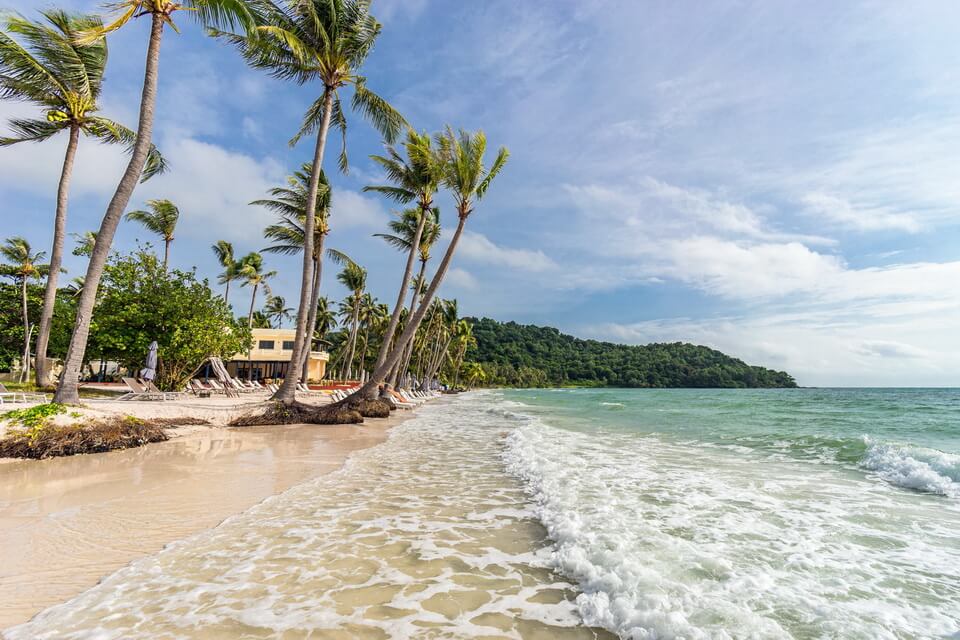
6 most beautiful beaches in Phu Quoc
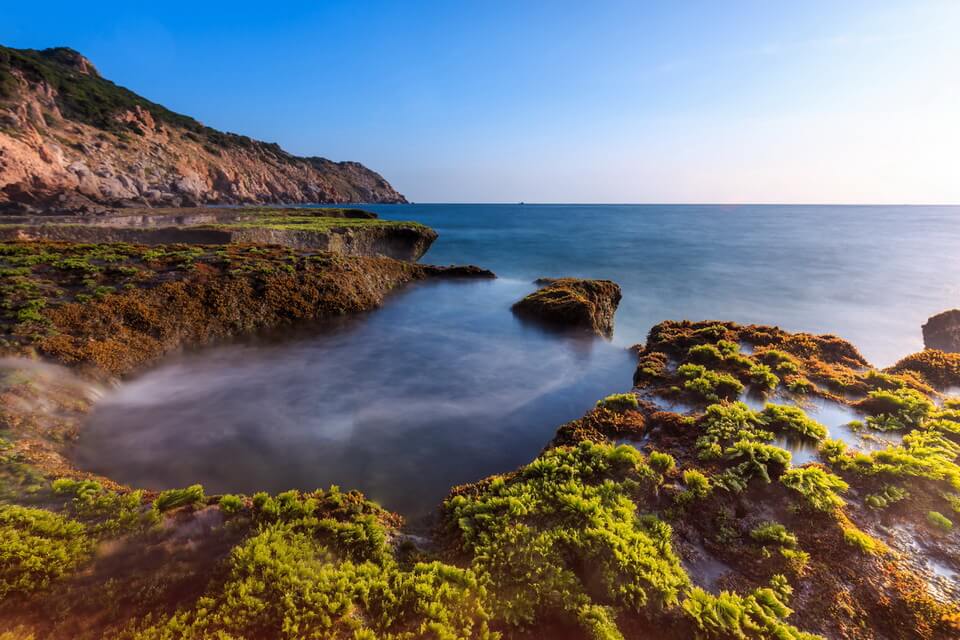
Chilling out at 5 sea paradises of the South Central Coast
Having your heart stolen in Quy Nhon
If you have never been to Quy Nhon, gone around or discovered emerald Ky Co, cool Eo Gio in the late ...
6 gorgeous sea paradises for summer travel
In the hot weather, you may just want to get away to the blue sea, immerse yourself in the refreshin ...
Luxuriously checking in at famous resorts in Phu Quoc
What motivates you every time you think of travel? To get some new experiences, to relieve stress, t ...
Enjoy 24 hours in Da Lat, Vietnam
Today, both foreigners and Vietnamese tourists love to visit Da Lat any day in the year for some coo ...
Tet and others spectacular festivals around the world in January 2020
In January 2020, Tet festival in Vietnam and others spectacular festivals around the world are color ...
Tet Nguyen Dan in Vietnam and best places to visit
Tet Nguyen Dan or Tet is the most important festival in Vietnam. It is the Vietnamese New Year marki ...







